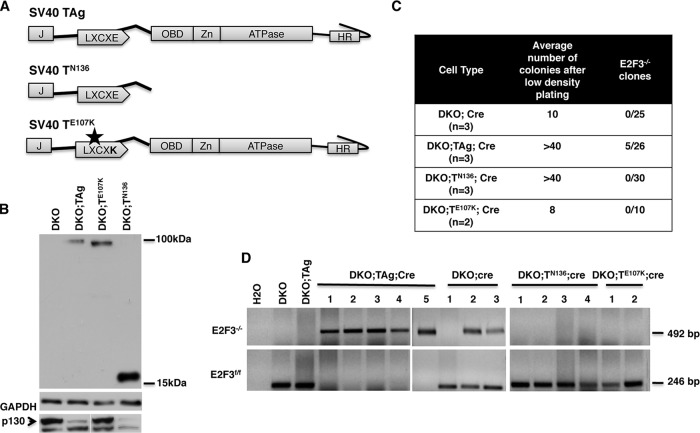FIG 6.
TAg requires an intact LXCXE motif and a C-terminal activity to rescue the proliferation defect observed in TKO MEFs. (A) Diagram of the TAg mutants used in this study: wild-type TAg (TAg), an amino-terminal truncation mutant containing the LXCXE RB binding motif (TN136), and a full-length point mutant defective for RB binding (TE107K, indicated by the star). (B) The levels of TAg and p130 were evaluated by Western blot analysis in DKO MEFs expressing different versions of the oncogene. (C) Summary of the numbers of clones obtained from cre-recombinase-treated cells after plating at low density. After treatment with cre-recombinase containing retroviral transduction and drug selection, cells were plated at low density and clonal lines from single cells were obtained. The experiment was performed in duplicate for each cell type and was repeated three times, except in the case of DKO;TE107K, for which the experiment was repeated only twice. The data in the second column indicate the average numbers of colonies per plate observed upon low-density plating. The data in the third column indicate the numbers of clones for which E2F removal was successful versus the number of clones tested. (D) PCR analysis to determine the presence or absence of E2F3 in clones of cre-treated DKO MEFs expressing TAg, TN136, or TE107K, as described in the Fig. 2 legend and Materials and Methods.

